1600 CEST Valletta, Malta. It has been a tricky 24 hours for all crews competing in the 46th Rolex Middle Sea Race. All yachts are through the Messina Strait, with the last pair, Mowgli of Portsmouth (GBR) and Sao Jorge (GBR), exiting at lunchtime today. Only two yachts, however, have rounded Favignana at the northwest corner of the course. The wind remains light and patchy across the course, and even the front runners have endured their share of struggles with the less than cooperative conditions. Black Jack 100, line honours favourite, has a 50 nautical mile lead over Balthasar, but headway remains complex and painful. Black Jack’s ETA has been Tuesday morning for some hours, but the predicted time has been lengthening with every new position report. Fresh breeze is expected from the west, but the when, what, and how much is as uncertain as ever.
Light winds have been firmly on the menu for the past day, with intermittent bouts of progress across all classes. In IRC 1, the Reichel/Pugh designed Black Jack 100 entered by Remon Vos finally reached Favignana at 2313 CEST on Sunday night, some five hours ahead of the Louis Balcaen-led Balthasar. Wiggling her way south the jet black maxi was knocking along at a respectable 10 plus knots – far better than this time last year – and was abeam Pantelleria, on the western extremity of the course, at 0738 CEST. Then the glue set in and only 30nm have been clicked since. Balthasar, meanwhile, looked to be buried this morning as the leader stretched south. However, a sniff that routing west of the rhumb line towards the African coast would be advantageous, brought the Mills 72 into fresh breeze not yet available to the south. As we close this report, Balthasar is just passing Pantelleria, and the wind appears to have reached Black Jack. The skipper, Tristan Le Brun, will be relieved that their hard work has not been undone by the capriciousness of the wind gods. Black Jack is currently scheduled to finish sometime after 0800 CEST on Tuesday, 21 October in the morning. That may well change as conditions develop.
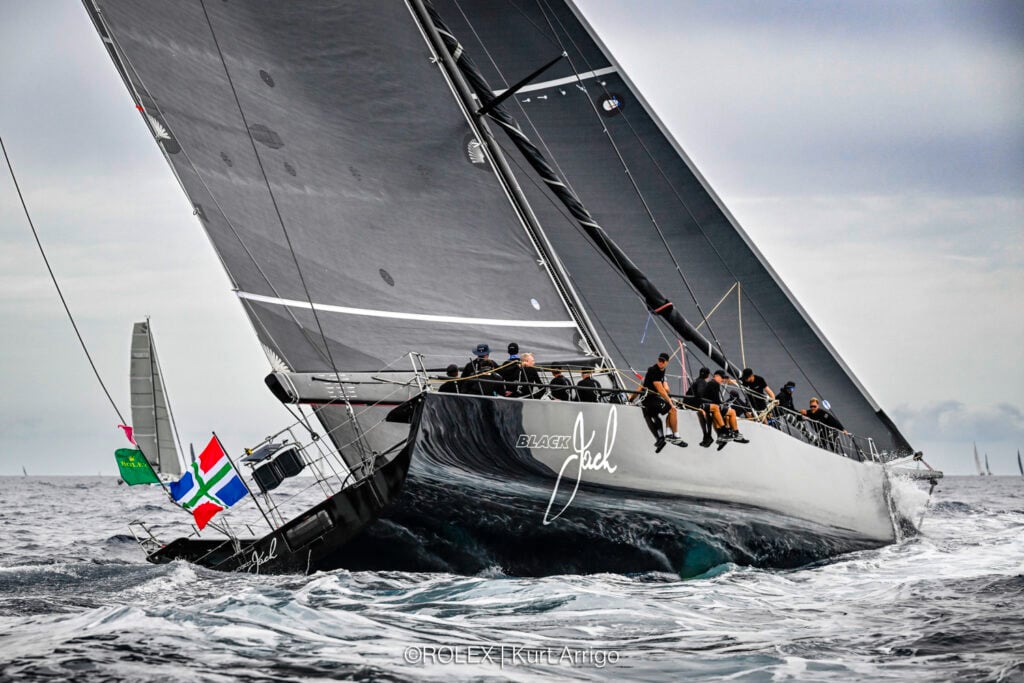
Further back, indeed a long way back, no other yacht has yet rounded the northwest corner of Sicily. Daguet 5, the French Carkeek 54 in IRC 2, has made a sterling effort, and earlier in the afternoon looked on track to pass Favignana. Again, the wind refused to favour anyone, Frédéric Puzin and his crew are still north of Levanzo, with the Australian J/V62 Whisper and the Botin 52 Django Deer bearing down on their position at close to 10 knots. Prior to this point, the crew of Daguet 5 had been sailing out of their skins, successfully holding off the immediate competition, and even managing to extend. This may also be about to change.
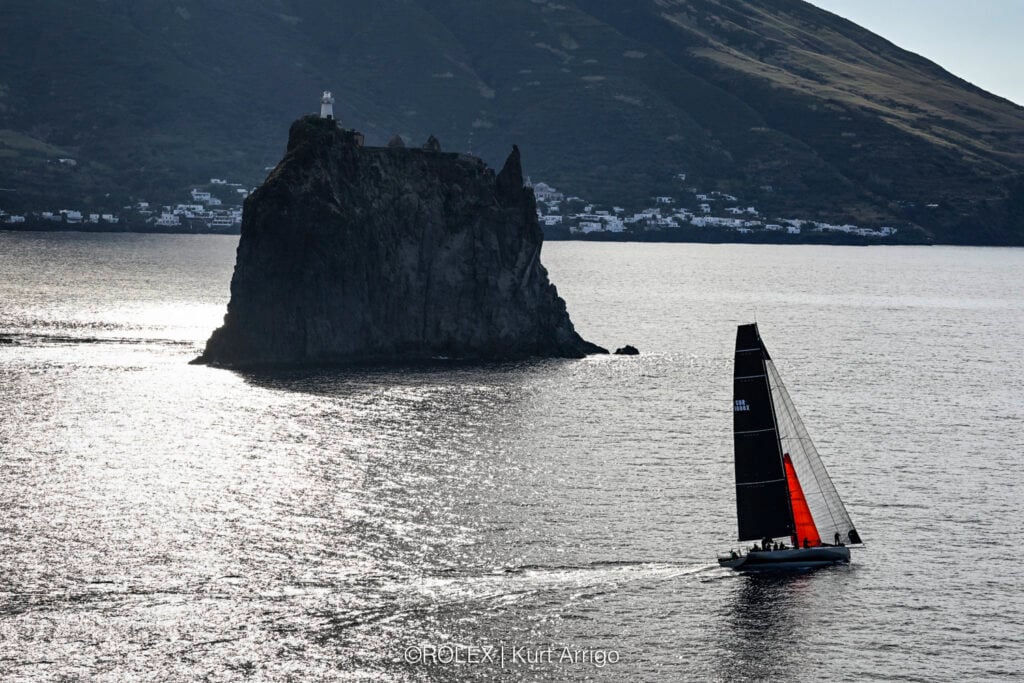
Arto Linnervuo, owner and skipper of the Infiniti 52 Tulikettu from Finland, in IRC 2, sets the scene in this late afternoon report: “It is important to just keep moving towards the corner. It is really hot, and we are trying to jump from one patch of little breeze to the next one. It is extremely difficult to get around. Weight to leeward, then back up, and then back to leeward. It is constant work with the weight distribution. It is odd how you see patch of breeze that is suddenly not there anymore, like an oasis in the desert. The crew is focused on the job and motivated. Going back and forth from high mode with our biggest jib to speed mode with our large flat reacher.”
“In general, the feeling onboard is good. We have been right in the game with the toughest competition, so better than before. We need just one window to stick out the orange board [DSS foil] and get down back to Malta full-speed ahead.”
The TP52 Arkas Blue Moon from Turkey, co-skippered by Serkan Yapan and Tolga Yagli, also used a quiet moment to sum up their experience. “It has been a tricky race so far,” said Martin Watts. “We spent the first night dragging a bundle of rope, plastic bags, sticks, and even crustaceans wrapped tightly around the keel. It wasn’t safe to clear in the dark, so we waited until dawn and calmer water. Safak [Temur] did a brilliant job cutting it free. Unfortunately, we probably lost about half a knot of speed that first night.”
“We had a great exit from Messina and a solid run up to Stromboli. Last night, though, was challenging — very shifty and patchy. At times it was hard just to keep the boat moving, and we missed a couple of key shifts that would have helped us hold a more southerly line. Now we’ve just sailed into a big header and a light patch off the northwest corner of Sicily. It’s not ideal for attacking the boats around us, but this corner can be a real minefield — huge shifts and random holes that defy all logic. My love–hate relationship with this race continues!”
North of Sicily, midway between Strombolicchio and Favignana, IRC 3 and 4 are in a clump. Nearly everyone is north of the rhumb line, with the French ICE 53 Soleag skippered by Jean Yves Thomas in extremis, closer to Ustica than Sicily. The DK46 Hydra, skippered by Wayne Zittel from the United States, is mimicking the approach. It does not seem to have been a hugely successful tactic, with Hydra dropping off the provisional IRC 3 podium since leaving the orbit of Stromboli and replaced by the Maltese yacht Artie III, co-skippered by Lee Satariano and Christian Ripard. Aboat Time, the Bulgarian ClubSwan 42 skippered by Sandro Montefusco, continues to lead the class under IRC time correction, but in the mixed-wind mêlée overnight has been overhauled by the lower rated ClubSwan 42 BeWild owned by Renzo Grottesi from Italy, competing in IRC 4.
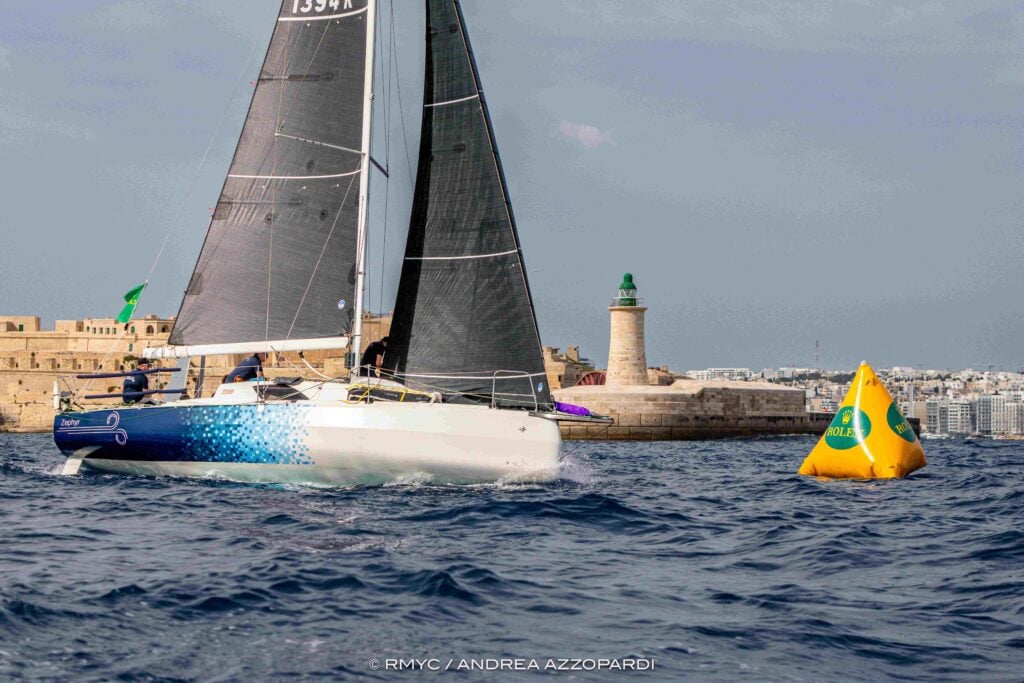
The leaders in IRC 5 and 6 have also taken advantage of the fleet compression since Stromboli. Simon Tom’s British Sun Fast 3300 Zephyr, in IRC 6, continues to sail an exemplary course and is mixing it with the theoretically faster and more powerful yachts in the classes above. They too are trying the northern approach. The Italian First 40 Mon Ile skippered by Gianrocco Catalano and the Podestà family’s First 45 Elusive 2 from Malta, in IRC 5, are contesting every puff, tooth and nail. The lead swinging between the boats, probably as often as the direction of the wind. Elusive looked to putting in a barn-storming performance earlier in the race. While they are undoubtedly dealing with what is in front of them with the expected tenacity and precision, Mon Ile has found her own way of piecing together the puzzle.
Calling in from the north of Sicily, just to the west of Alicudi, Seb Ripard on the Maltese Farr 30 Calypso had this to say: “It has been a slow, but beautiful 24 hours for Calypso. We’re the smallest boat in the fleet — just 30 feet — so patience is definitely part of the game. North of Sicily, the breeze has been light and fickle, and at times we’ve just had to coax every ounce of speed from the sails. It’s the kind of race where you need to keep your sense of humour and stay positive.”
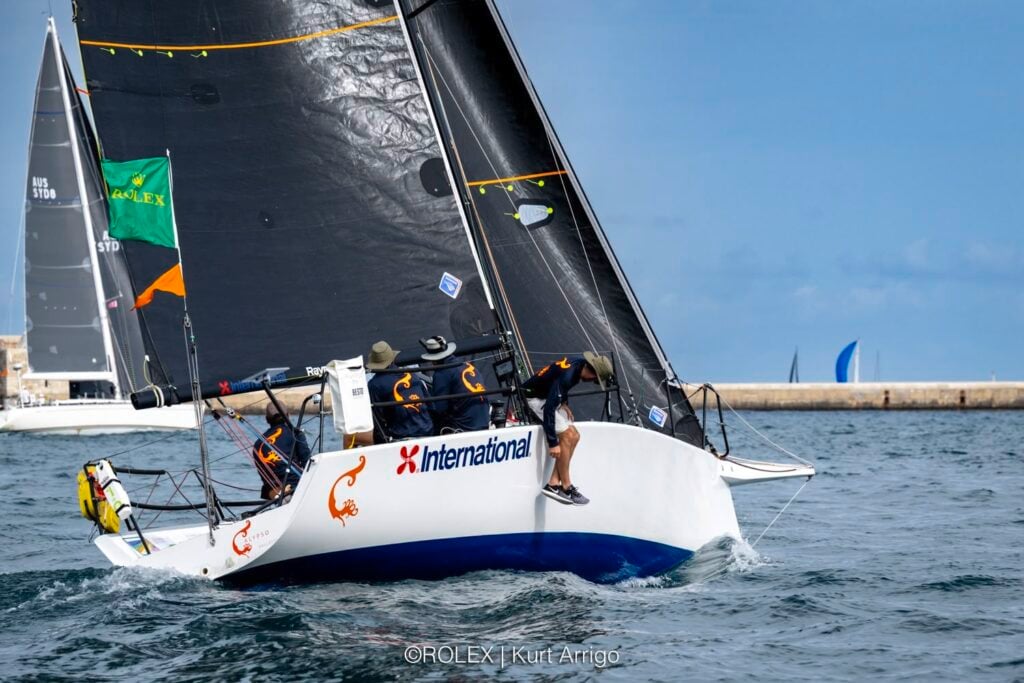
“The five of us onboard go way back to school days, so there’s great camaraderie — endless banter, a few bad jokes, and plenty of coffee to keep things going. We’re all Maltese, so racing home waters in an international fleet like this means a lot. It’s about friendship, teamwork, and just enjoying the challenge together.”
“We’ve taken a slightly more inshore route, hoping to catch a bit of the sea breeze off Sicily, while others have stayed further offshore. Whether it pays off, we’ll see, but that’s part of the adventure. For us, it’s not just about results — it’s about being out here together, racing hard, and loving every mile of this incredible race.”
With only two boats round Favignana, almost the entire fleet is still edging west along the north coast of Sicily. The situation could hardly be more delicate. To the east of Italy, a steady northerly gradient breeze prevails; to the west of Sardinia, a strong southerly flow dominates. Between the two, the North Sicilian coast lies in a transition zone — the winds cancelling one another out, leaving the majority of the Rolex Middle Sea Race fleet trapped in a vast, unstable wind as a result. By the early hours of Tuesday, a south-westerly breeze should reach the yachts close to or round Favignana offering hope.
DAY 3 IRC FORM REPORTS @ 1600 CEST
IRC Overall
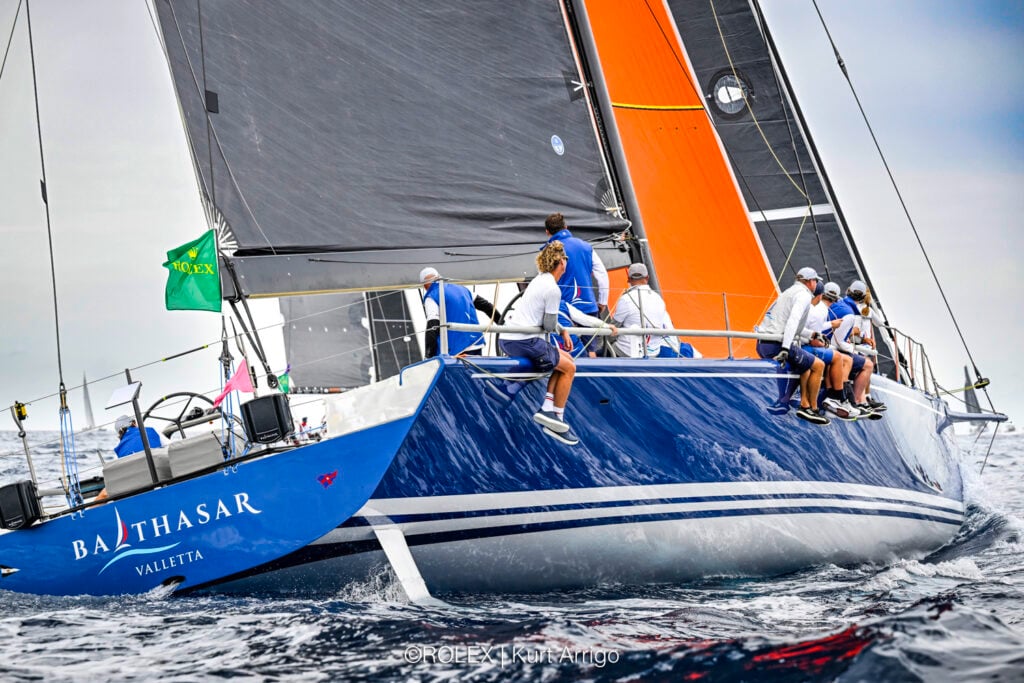
The Stromboli transit, with 90 boats around the volcanic mark, showed Balthasar to be leading from Black Jack 100 by nearly an hour with Elusive 2 in third. By Favignana, Balthasar had extended her lead over Black Jack to nearly three hours under IRC time correction. Pantelleria is the next transit for the leaders, and by tomorrow more boats should be on the leg south, giving a potentially clearer indication of who is in with a shout of the main prize.
IRC 1
With Balthasar and Black Jack seemingly locked in, eyes are on third place for the moment. Whisper held the spot at Stromboli, and according to the running positions maintains that position with a healthy lead over Jens Kellinghusen’s Ker 56, Varuna VI.
IRC 2
All yachts are between Stromboli and Favignana. Daguet 5 has a clear lead on the water, and at Stromboli was one hour 40 minutes ahead of Jon Desmond’s PAC 52 Final Final (USA) and Giovanni Lombardi Stronati’s Botin 52 Django Deer a further 20 minutes back on time correction. The live standings show a reversal of fortune, with Django Deer moving into the lead a handful of minutes ahead of Daguet 5, which must be galling for the French team. Final Final remains in third.
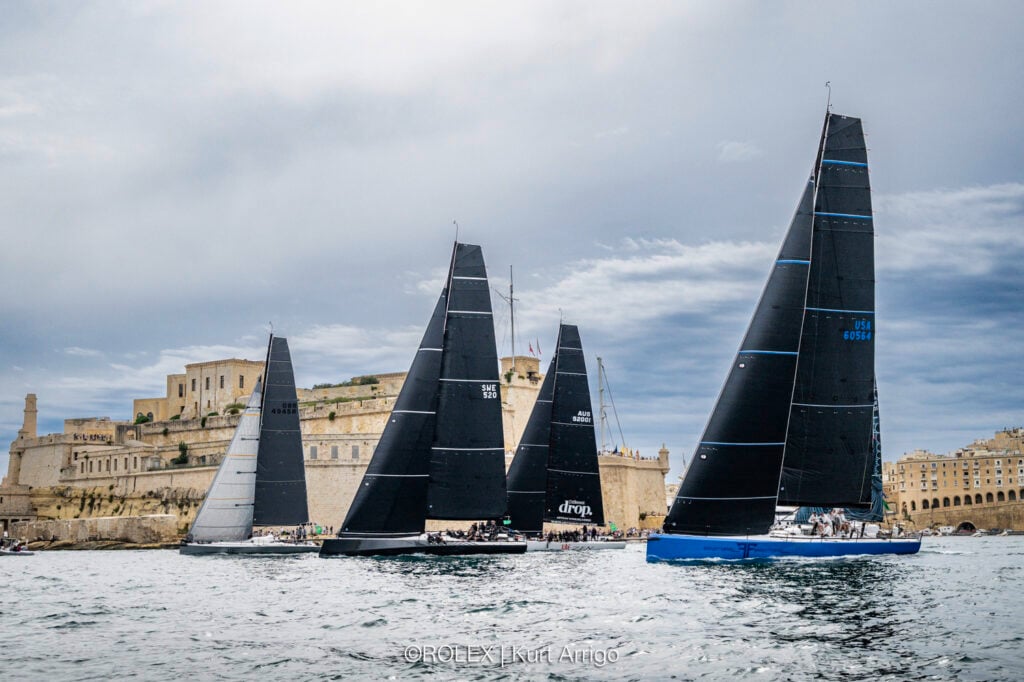
IRC 3
Again, all yachts are around Stromboli. Aboat Time led Gilles Caminade’s Ker 40 Chenapan IV by 53 minutes on IRC time correction, with Hydra in third. The live standings still favour the first two boats, but the French Neo 430 Roma of Yves Grosjean, Afazik Impulse (Neojivaro), has slipped into third with Artie III in fourth.
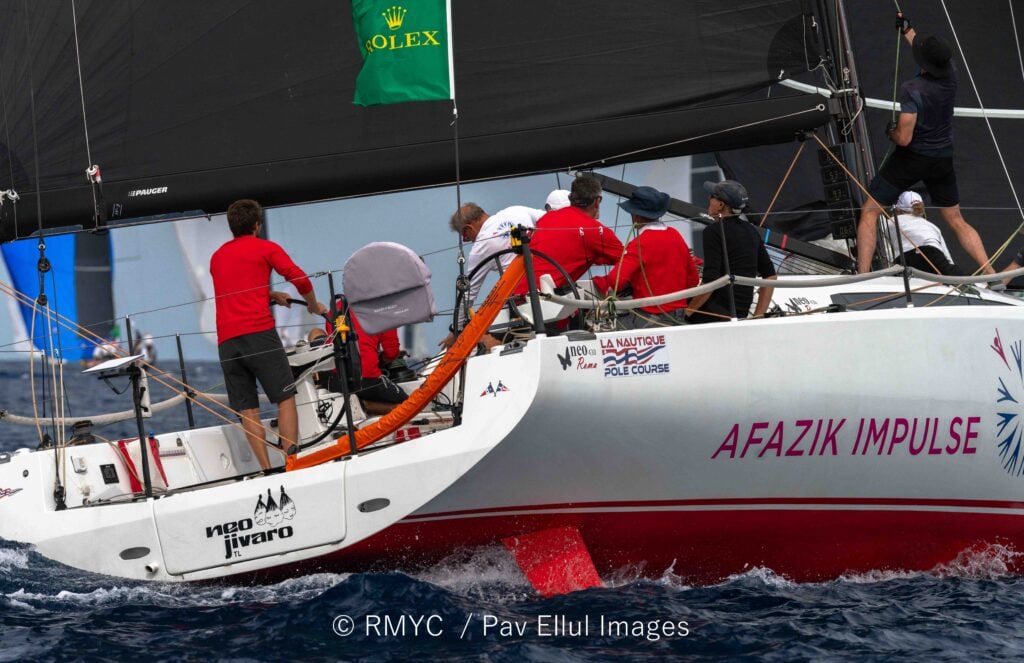
IRC 4
The leaders in IRC Four are now about 70 miles from Favignana, struggling for breeze as progress slows to a crawl — but the competition remains fierce. BeWild has posted the best 24-hour run in the class to lead on the water, though after IRC time correction she currently sits fourth overall. About eight miles astern, Jonathan Gambin’s Dufour 44 Ton Ton Laferla (MLT) holds the provisional lead. Antonio Giulio Cafaro’s Adria 49 Ars Una (ITA) is estimated to be second, with Taavet Hinrikus’s MAT 1220 Nola (EST), skippered by Margus Uudam, just 23 minutes behind in third on corrected time. Géry Trentesaux’s Ker 43 Long Courrier (FRA) remains firmly in contention among the frontrunners and is provisionally placed fifth. At Stromboli, Ars Una led Long Courrier by 12 minutes, with Ton Ton Laferla in third.
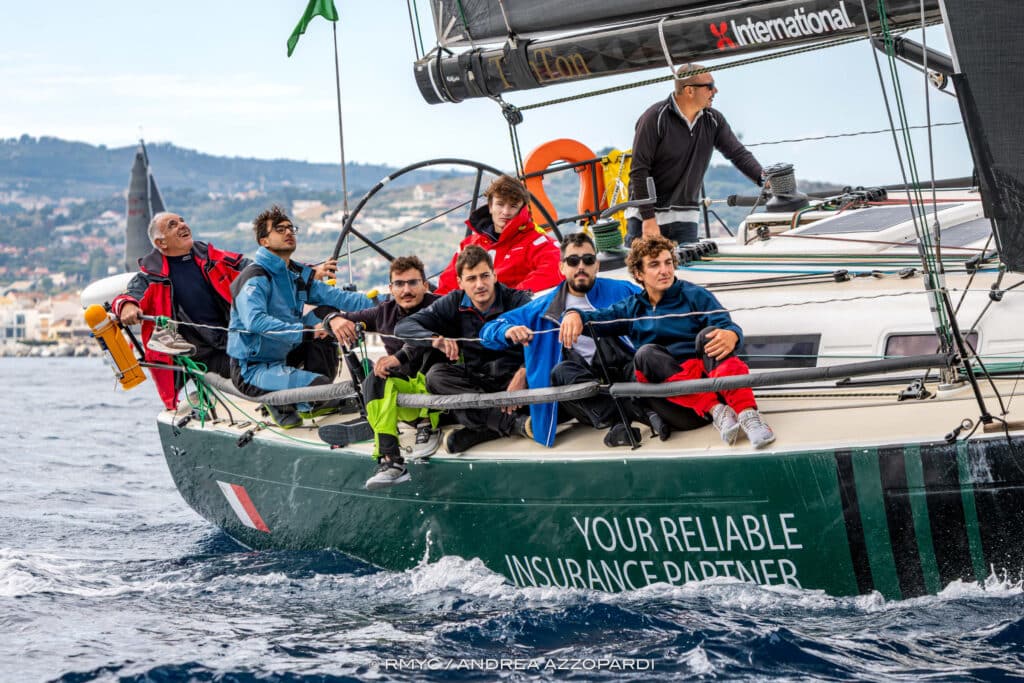
IRC 5
Elusive 2 continues to lead on the water, but Mon has pulled out all the stops to close within two miles of the Maltese team, taking the provisional lead after IRC time correction. Further north, Nikki Henderson’s J/122 Noisy Oyster (GBR) has made significant gains, climbing into second place on corrected time, just ahead of Elusive 2, which now sits third overall in the class. This is harsh on Elusive 2, which had eked out nearly an hour’s lead over Mon Ile at the Stromboli transit. There is plenty of life left in this particular battle.
IRC 6
Zephyr retains the provisional lead in IRC 6, holding a seven-mile advantage on the water over the rest of the fleet. Behind them, the battle for second remains fierce between George Greer’s Arcona 380 Kiboko Tatu (USA) and Andrew Agius Delicata & Matthew Gabriele’s Reflex 38 Vivace (MLT). Kiboko Tatu has won the latest battle, having extended its advantage to ten miles and now sits more than three hours ahead of Vivace after time correction. At the Stromboli transit, it was Zephyr two hours 20 minutes ahead of Kiboku Tatu, with Vivace a further one hour 20 minutes behind.
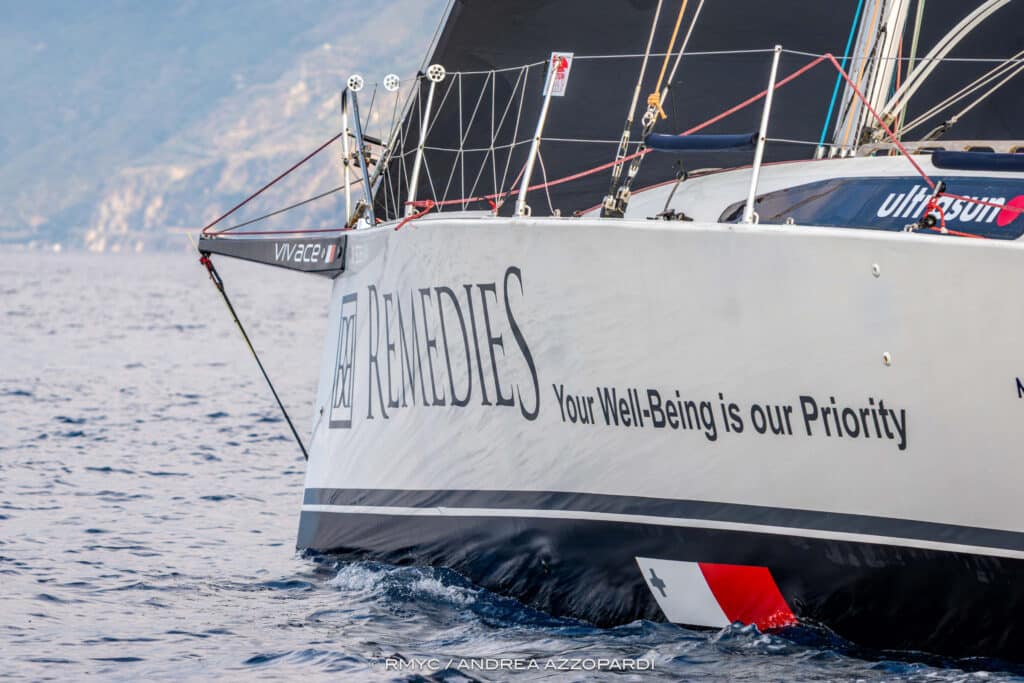
IRC Double-Handed
In the two-handed category, Marco Paolucci’s JPK 1180 Libertine (ITA), racing with Niccolò Bertola, has reclaimed the provisional lead from Guido Baroni’s Sun Fast 3600 Lunatika (ITA), co-skippered by Alessandro Miglietti. Libertine’s decision to stay further north has paid off handsomely, while Lunatika, along with Jeremi Jablonski’s Hanse 430 Avanti (USA) and Ivica Kostelić’s Figaro 3 Amelicor (CRO), all headed south — and have since run out of breeze. The Stromboli transit showed Libertine to hold a one hour 45 minute lead over Lunatika, with another 41 minutes to Avanti.
Multihull
The Paul Larsen skippered Allegra from Switzerland continues to plough a lonely furrow along the north shore of Sicily, and has reached San Vito lo Capo. Matteo Uliassi’s DNA F4 Falcon (ITA) has retaken the lead on the water from Aldo Fumagalli’s Rapido 53XS Picomole (ITA). At Stromboli, Allegra held a near eight-hour advantage under MOCRA handicap over Picomole with Gilles Bocabeille’s Alibi 54 Eleven in third. The live standings put Allegra 19 hours ahead of Eleven, with Picomole three hours further in deficit.
The Royal Malta Yacht Club thanks Visit Malta and Yachting Malta for their support.

